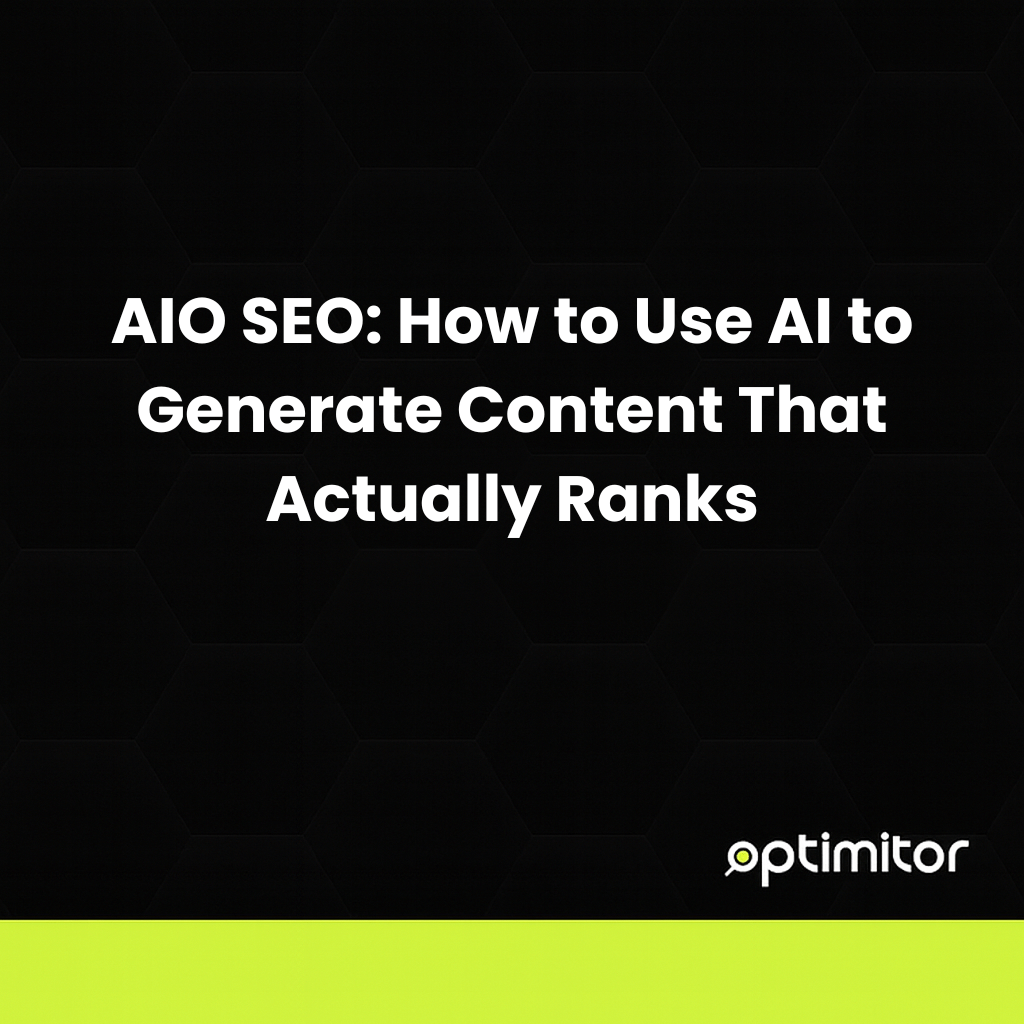AI tools can write faster than ever before. But speed means nothing if the content doesn’t rank, convert, or reflect your brand.
Welcome to AIO: Artificial Intelligence Optimization. It’s not just about letting AI write for you. It’s about knowing how to guide it, improve it, and publish content that search engines respect.
This post breaks down how to make AIO work — the right way.
What Is AIO SEO?
AIO stands for AI + human Optimization. It’s a process where:
- AI generates the first draft or structure
- A human editor refines, fact-checks, and aligns it to SEO goals
- The final result is polished, optimized, and ready for both Google and readers
It’s not AI vs. humans. It’s both, working together.
Why Pure AI Content Fails
AI-generated content often misses the mark because:
- It repeats generic information
- It lacks depth, nuance, or unique insights
- It gets facts wrong or outdated
- It doesn’t reflect your voice or intent
- It rarely uses structured data or semantic best practices
Google doesn’t punish AI content by default. But it does reward content that is helpful, trustworthy, and original. AI on its own isn’t enough to meet that standard.
What AIO Content Looks Like
Good AIO content is:
- Built around real keywords and topics
- Optimized for user intent
- Structured for featured snippets or entity extraction
- Edited for accuracy and clarity
- Designed to serve a purpose (rank, convert, build trust)
It reads naturally, ranks steadily, and reflects your brand with confidence.
Steps to Create AIO Content That Works
1. Start with Strategy
Choose your topic based on real search data. Use tools like Google Search Console, Ahrefs, or even the “People Also Ask” section in Google.
Know what you’re writing and why.
2. Use AI for Structure or Drafting
Prompt your AI tool to build a structure or draft for the piece. Keep it focused, and always guide it with clear instructions.
Example:
“Write an outline for a blog post titled ‘How to Choose the Right Local SEO Agency’ — include questions, tips, and common mistakes.”
3. Edit with a Human Brain
- Add real examples or case studies
- Improve phrasing for flow and clarity
- Check for accuracy and tone
- Insert custom data, testimonials, or visuals
Don’t just clean it up — make it better than anything else out there.
4. Optimize for Search
This is where the SEO layer comes in. Make sure the content:
- Uses proper headers (H1, H2, H3)
- Has internal links and relevant external citations
- Uses primary and secondary keywords naturally
- Includes a meta title and description
- Has a featured snippet section (bullets, tables, Q&A)
Also think about schema markup, alt text, and structured content blocks if applicable.
5. Layer in Entity and AEO Signals
To future-proof the piece, include:
- Clear brand mentions
- Topic associations that match Google’s NLP expectations
- FAQ blocks
- References to known entities and related topics
This helps you rank not just in search, but in featured answers and AI summaries.
Where AIO Shines
AIO is ideal for:
- Blog posts
- Resource hubs
- Product comparison pages
- How-to guides
- FAQ articles
- Supporting content for link building campaigns
It keeps your content machine running fast — without sacrificing quality.
What to Avoid
- Copying AI output directly
- Using AI for high-stakes topics (legal, medical, financial) without expert review
- Stuffing keywords just to check a box
- Publishing before checking facts or context
Treat AI as a tool, not a shortcut.
Final Thoughts
Content still wins in SEO, but the content that wins today is smart, structured, and created with purpose.
AI can help. But it’s human thinking that makes it rank.
That’s what AIO is all about.
Want to scale AIO without risking quality?
Ask Optimitor about our content workflows and how we blend AI tools with expert optimization to build trust, authority, and results.


